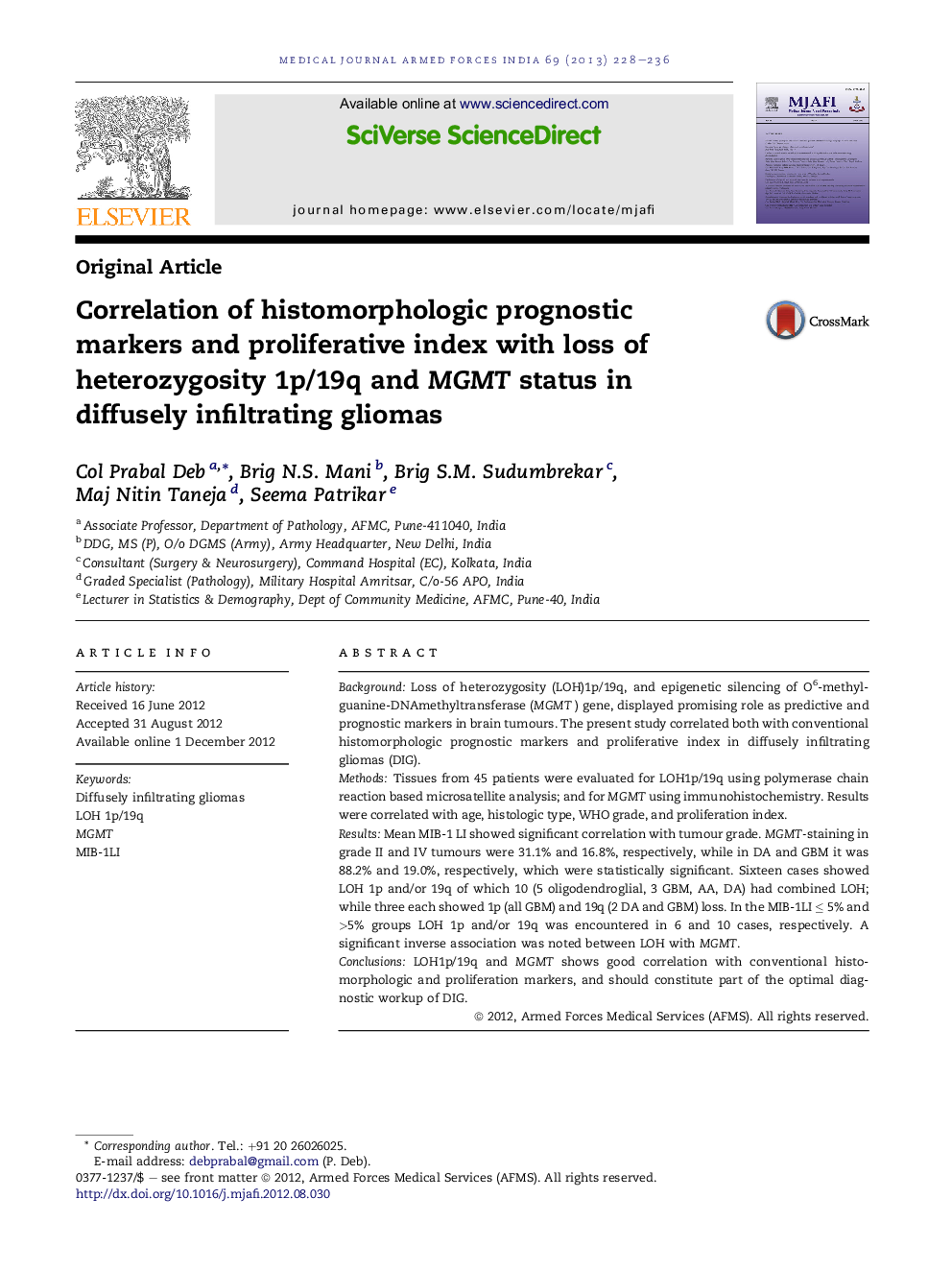| Article ID | Journal | Published Year | Pages | File Type |
|---|---|---|---|---|
| 3161776 | Medical Journal Armed Forces India | 2013 | 9 Pages |
BackgroundLoss of heterozygosity (LOH)1p/19q, and epigenetic silencing of O6-methylguanine-DNAmethyltransferase (MGMT) gene, displayed promising role as predictive and prognostic markers in brain tumours. The present study correlated both with conventional histomorphologic prognostic markers and proliferative index in diffusely infiltrating gliomas (DIG).MethodsTissues from 45 patients were evaluated for LOH1p/19q using polymerase chain reaction based microsatellite analysis; and for MGMT using immunohistochemistry. Results were correlated with age, histologic type, WHO grade, and proliferation index.ResultsMean MIB-1 LI showed significant correlation with tumour grade. MGMT-staining in grade II and IV tumours were 31.1% and 16.8%, respectively, while in DA and GBM it was 88.2% and 19.0%, respectively, which were statistically significant. Sixteen cases showed LOH 1p and/or 19q of which 10 (5 oligodendroglial, 3 GBM, AA, DA) had combined LOH; while three each showed 1p (all GBM) and 19q (2 DA and GBM) loss. In the MIB-1LI ≤ 5% and >5% groups LOH 1p and/or 19q was encountered in 6 and 10 cases, respectively. A significant inverse association was noted between LOH with MGMT.ConclusionsLOH1p/19q and MGMT shows good correlation with conventional histomorphologic and proliferation markers, and should constitute part of the optimal diagnostic workup of DIG.
